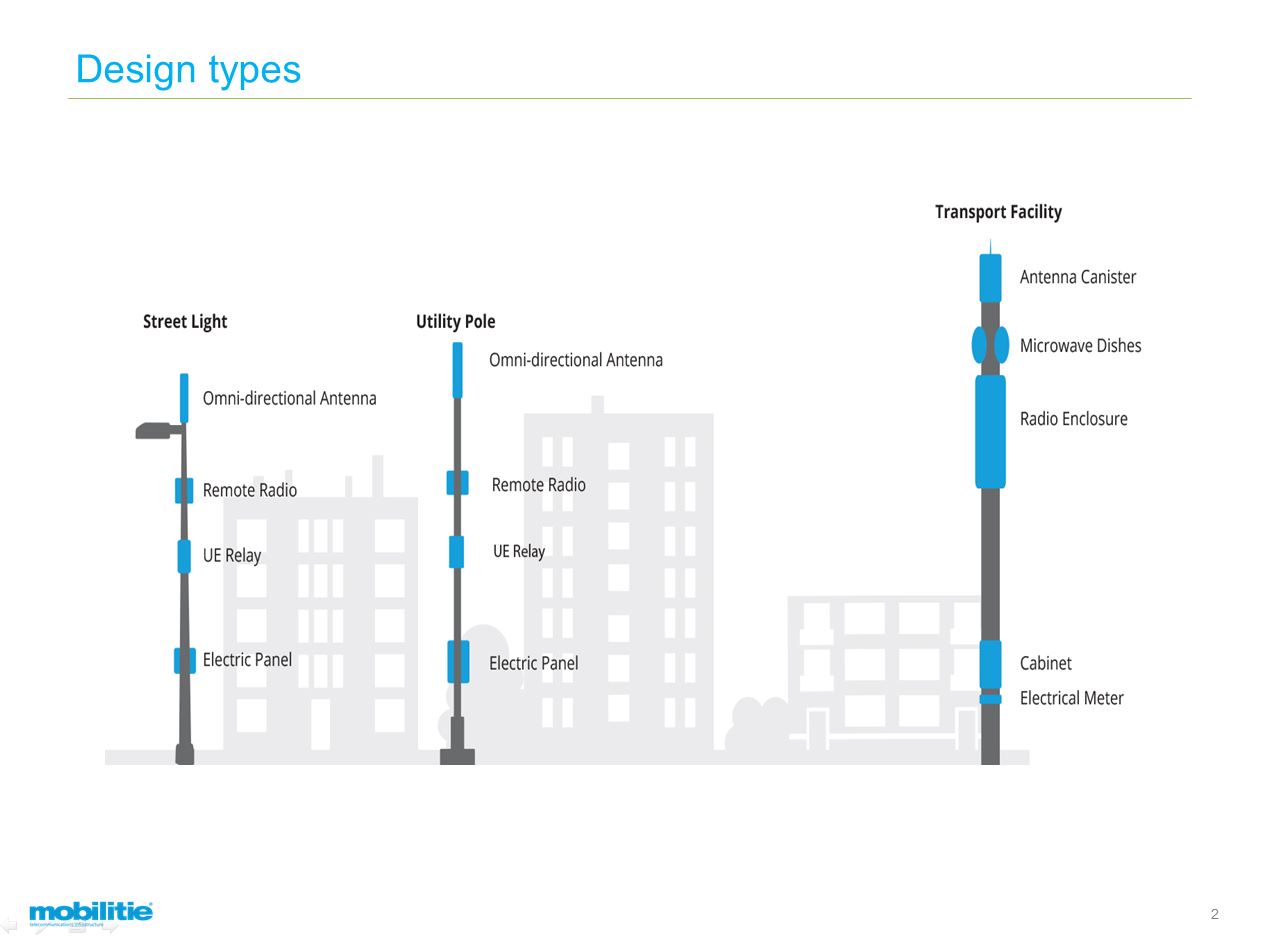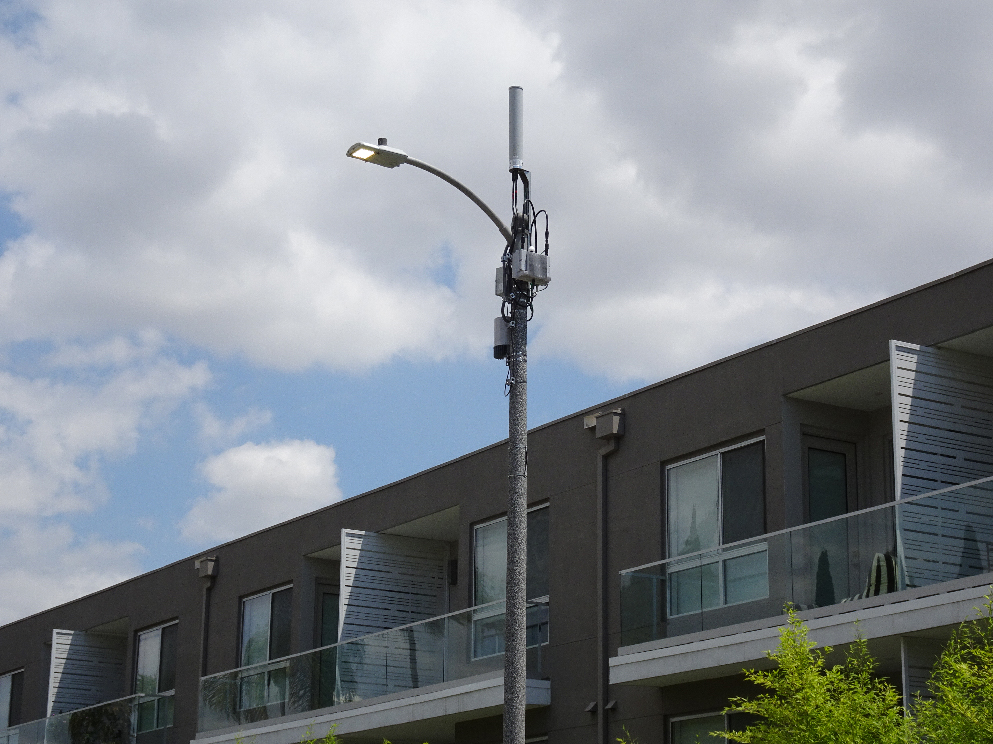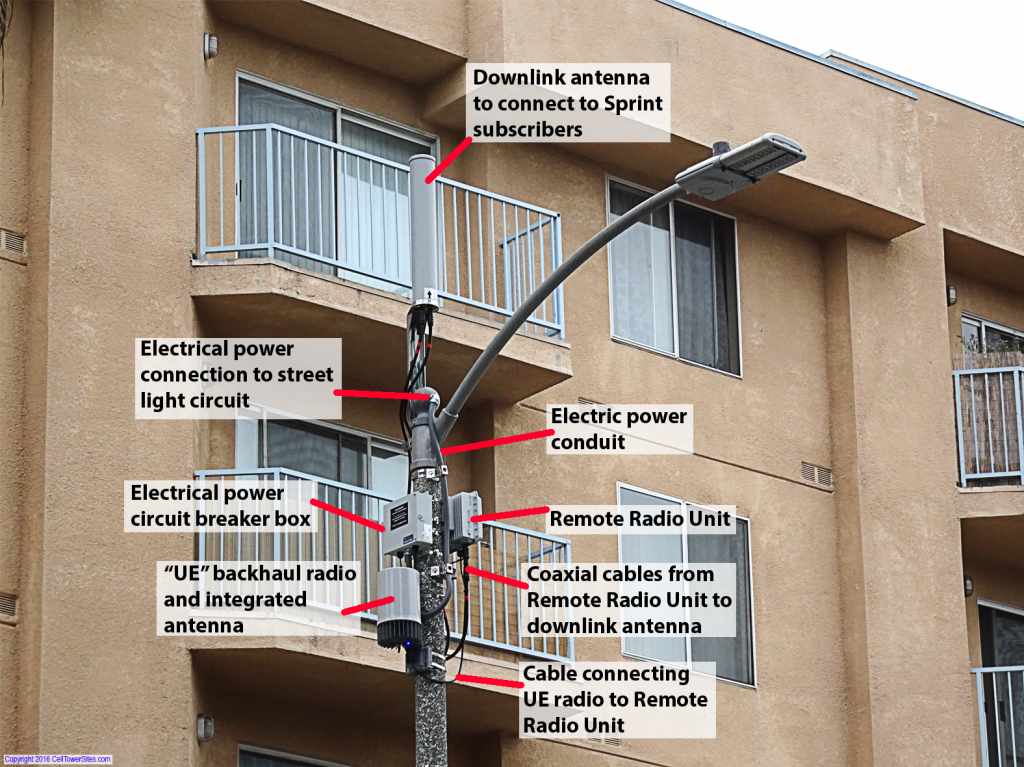This post is part of my contribution to the ongoing public policy debate and discussions regarding the current Mobilitie build for Sprint. Mobilitie has developed the illustration shown in Figure 1, below, apparently as a way to show local governments and the public Mobilitie’s various pole configurations in at least block form. Most recently, a week ago, Mobilitie presented this very illustration to a group of local government telecom officials in Southern California at the SCAN NATOA meeting. I attended that meeting.
Take a close look at Figure 1 and then please continue to read on. Figure 1. Illustration created by Mobilitie. This illustration is presumably copyright by Mobilitie. Used here under the Fair Use Doctrine.
Figure 1. Illustration created by Mobilitie. This illustration is presumably copyright by Mobilitie. Used here under the Fair Use Doctrine.
The problem with Mobilitie’s illustration in Figure 1 is that it grossly misrepresents and under-represents the scale and impact of their proposed facilities. Mobilitie’s illustration has no indicated scale, and the pole elements are not scaled to each other. Mobilitie’s illustration is, in my opinion, deceptive and misleading.
I have taken Mobilitie’s illustration and through the magic of Photoshop scaled the poles to each other. I started with the reasonable assumption that the light standard and equipment/antenna configuration topped out at about 34 feet above ground level. In Figure 2, below, that’s the pole on the left. Then, knowing that Mobilitie has been promoting 75 foot tall wood utility poles in various communities around the country, I scaled the middle pole in Figure 2 to be approximately 75 feet above ground level. Finally, I scaled the transmission pole on the right hand side of the illustration to be about 120 feet tall, which is the height that Mobilitie promotes around the country for theses tallest poles. Here is Figure 2:
 Figure 2. Illustration created by Mobilitie, which has been annotated and scaled by Dr. Jonathan L. Kramer. This illustration is a derivative of an illustration presumably copyright by Mobilitie. Created and used here under the Fair Use Doctrine.
Figure 2. Illustration created by Mobilitie, which has been annotated and scaled by Dr. Jonathan L. Kramer. This illustration is a derivative of an illustration presumably copyright by Mobilitie. Created and used here under the Fair Use Doctrine.
As you can see from Figure 2, which is now scaled against the street light pole, the height impacts of the utility and transmission poles are substantially greater than one would expect simply relying on Mobilitie’s illustration. Also, it is my opinion, based on Mobilitie plans I have seen and reports I have reviewed that the widths of all three poles is misrepresented in Mobilitie’s illustrations. I have not tried to account for those width errors in this analysis, and leave that task for the reader.
Finally, in Figure 3 below, I have prepared an animated graphic that will help to better frame Mobilitie’s illustration against the reality of Mobilitie’s plans. You may want to download this to better see it on your screen.
 Figure 3. Illustration created by Mobilitie, which has been annotated, scaled, and animated by Dr. Jonathan L. Kramer. This illustration is a derivative of an illustration presumably copyright by Mobilitie. Created and used here under the Fair Use Doctrine.
Figure 3. Illustration created by Mobilitie, which has been annotated, scaled, and animated by Dr. Jonathan L. Kramer. This illustration is a derivative of an illustration presumably copyright by Mobilitie. Created and used here under the Fair Use Doctrine.
What is the point of all of this? In my mind, the key point is that local governments and their constituents have a fair right to demand a reasonable level of accuracy when asked to consider projects that will impact their communities. I believe that Mobilitie’s graphic in Figure 1, regardless whatever their intent in presenting it, ends up being quite deceptive by its lack of internal and external scales both for height and width.
If you would like to download Mobilitie’s entire PowerPoint presented last week, click here.
Finally, given the national importance of the ongoing public discussion regarding Mobilitie’s nationwide project for Sprint (and maybe others in the future), I encourage you to share this posting.
–Dr. Jonathan L. Kramer




 Here’s another Mobilitie site in Los Angeles marked up by component. This photo also clearly shows the GPS antenna connected to the RRU. As with the prior posted photo, the design of this site leaves lots to be desired, especially given how long it is likely to remain in the right of way (unless, of course, Sprint goes BK and its frequency blocks are sold off).
Here’s another Mobilitie site in Los Angeles marked up by component. This photo also clearly shows the GPS antenna connected to the RRU. As with the prior posted photo, the design of this site leaves lots to be desired, especially given how long it is likely to remain in the right of way (unless, of course, Sprint goes BK and its frequency blocks are sold off).

